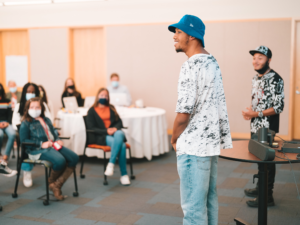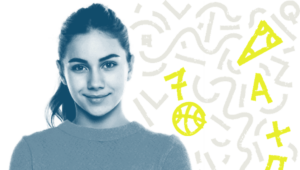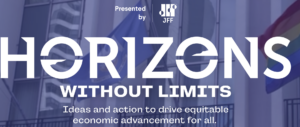Enriching the Path to Wisdom

Most Likely to Succeed, a new documentary film about the need for school transformation, has generated a lot of recent media coverage. Getting Smart staff members have viewed the film as part of our own professional learning, and we reviewed the film here. Tom responded to a recent article in the New York Times about the film here, and Ted Dintersmith recently wrote a Washington Post article about his film and his hopes for a Future of School Tour to create a grassroots movement to transform education.
Bob Lenz, executive director of the Buck Institute for Education, and Jonathan Raymond, President of the Stuart Foundation, co-authored a piece originally published on Medium, about the film and the transformational learning experiences when students engage in project-based and real world learning.
“Schools for Wisdom” by David Brooks in The New York Times, October 16, 2015, misunderstands San Diego’s High Tech High and all Project Based Learning (PBL) schools by assuming they are absent of rigor and overly focused on building self-esteem, and by failing to understand the depth and intellectual richness that comes from schools that engage students in creative — not “artsy” — intellectual work.
PBL is not, as Brooks suggests, about shifting from content to “life skills;” rather, PBL is about learning and mastering key content knowledge, demonstrating and applying both academic knowledge and cognitive skills, and building the capacity to transfer learning to new and different challenges.
When Brooks says, “Ultimately, what matters is not only how well you can collaborate in groups, but the quality of the mind you bring to the group,” we’re left scratching our heads. Collaboration inherently means effective contribution to group work. Doing well at collaboration means that you are bringing your mind to group tasks and actively using it; not being attentive, not “showing up” intellectually and actively, is not good collaboration. So when teachers at High Tech High talk about a student being a good collaborator, this is an assessment of their ability to contribute intellectually to the work being done — not a feel good statement about how well a student relates to other people.
When Brooks criticizes High Tech High for “taking an old idea, project-based learning, and updating it in tech clothing,” we respond as follows: PBL may not be a new idea, but there is still a need for people to learn how to do it well, and it is still not the norm in too many classrooms. Further, “tech clothing” does not, and never will, ensure that PBL is being done well. Good technology integration supports excellent instruction, student skill development, and preparation for college and the workforce. The clothes don’t make the classroom: teachers and students do. The education world, and the general public, will benefit from seeing strong examples of technology-integrated classrooms that are delivering rigorous, content-based, skills-rich learning to its students.
Brooks is simply perpetuating the fallacy that more traditional schools are more rigorous, a fallacy that assumes that giving kids challenging content to remember and regurgitate — and a lot of it — is rigor. The amount of homework assigned is often used as a gauge for rigor (e.g. “That teacher is really rigorous. She assigns two hours of homework every night!”). However, there is very little alignment with this type of so-called rigor and the challenging skills, competencies, and dispositions students need to master for success in college and career. As Harvard Professor Tony Wagner explains, “I have yet to talk to a recent graduate, college teacher, community leader, or business leader who said that not knowing enough academic content was a problem. In my interviews, everyone stressed the importance of critical thinking, communication skills, and collaboration.”
Other experts agree. According to University of Oregon Professor, David Conley in College Knowledge, most first year college professors assume that students do not know the content of their courses and build their courses to teach the same content that was taught in high school. They would like more students to come prepared by acquiring “key cognitive strategies” such as “problem-solving skills, conducting research, interpreting results, and constructing quality work products.” Employers report the same need and plan on teaching their content to new hires.
The skills and competencies highlighted by Wagner and Conley are the very skills being developed, practiced, and proven at High Tech High and other high-quality PBL schools, at the same time that teachers are ensuring their students are acquiring the academic content they need.
Furthermore, schools like High Tech High are places that are educating the whole child, taking into account the academic, civic, social, physical, and emotional development of students. These are the kinds of schools required of modern life. A century ago, our society required factory model schools that taught slowly changing content and established skills. Today, we are in a world where information, content, skills and even knowledge are shifting and changing at lightening pace. A generation from now, our children will need to know both content and skills we can’t even conceive of yet. This is a reality that makes whole child education paramount: succeeding in and contributing to modern society will require students to develop abilities and characters to navigate and make sense of this dizzying landscape. Our response must be to create flexible, capacity-building learning environments that will position every student for success. The classrooms Brooks romanticizes in Schools for Wisdom do not accommodate the needs of the modern world. Schools must change in light of this new reality, and PBL represents the best path forward to prepare students well.
As for his title, “Schools for Wisdom,” he falsely assumes that wisdom comes from a classroom. It comes from a life lived. PBL prepares students to be life-long learners in a way that rote memorization of content does not. It teaches students what their brains are capable of. In its truest form, PBL never loses its emphasis on rigor or content; rather, it enriches content with creativity, connections, and engagement. Talk to students who have benefited from this kind of education, and they’ll tell you that what they come away with is empowerment, awareness of their own intellectual ability, confidence to be creative and innovative in their chosen fields.
While the stairway from information to knowledge to wisdom may not have changed, it is certainly traveling through a different and more complex environment, one that requires each of us to head up that stairway armed with more: more skills, more confidence, more opportunities — in addition to the information and knowledge that will propel us forward. PBL doesn’t seek to replace or circumvent humanity’s age-old quest for wisdom. Instead, PBL seeks to make the journey richer and more relevant for more students.
Finally, and most importantly, Brooks misses the chance to showcase that project based learning done well offers the chance to merge relevant academic content with social and emotional skills necessary to educate and develop children. Ensuring our kids develop the core competencies to think, relate, and belong are essential to develop the whole child. We invite Mr. Brooks to scratch the surface a little more to see the evidence of this kind of uplifting education taking place in project-based learning classrooms around the country.
For more on project-based learning, see:
- Must Know Buck Institute Project-Based Learning Resources
- Transforming Schools Using Project Based Learning, Performance Assessments and Common Core Standards
- Project-Based Learning and the Middle School Mind
Jonathan Raymond is President of the Stuart Foundation. Follow Jonathan @jraym0. Bob Lenz is Executive Director of the Buck Institute for Education. Follow Bob @PBLBob.







0 Comments
Leave a Comment
Your email address will not be published. All fields are required.